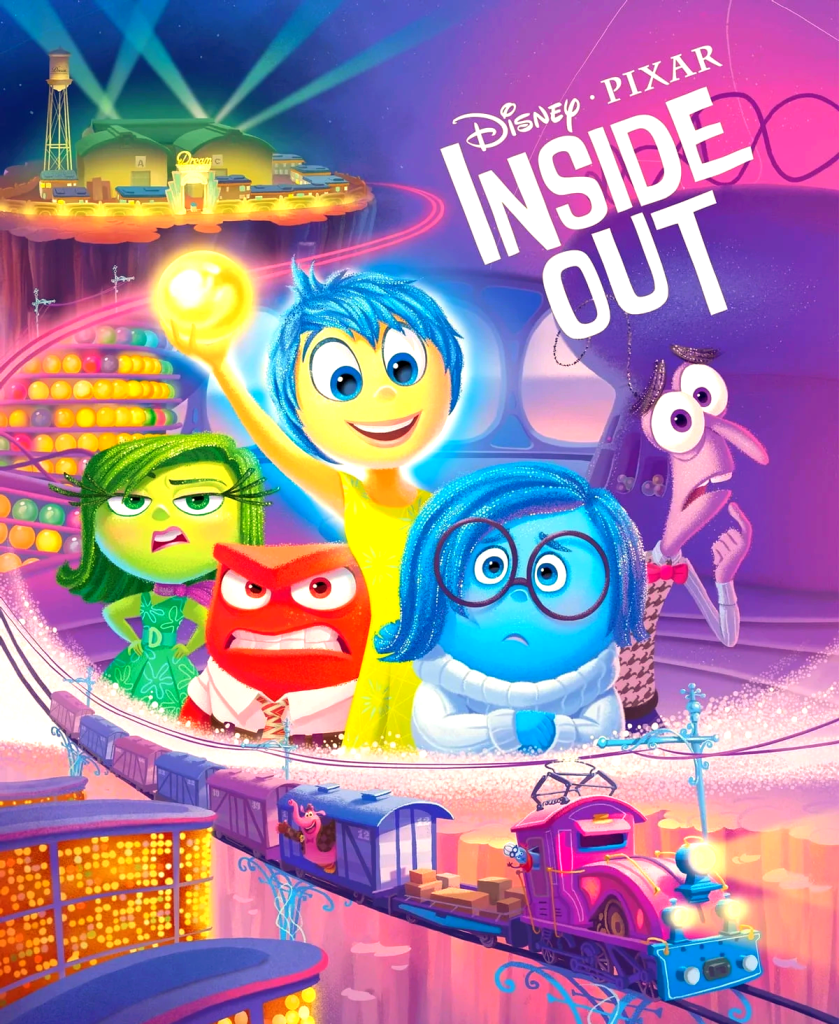Inside Out: How Pixar Explored the Depth of Human Emotions Through Animation
terehiatheatre // animation 2025-05-06
Introduction: A Masterpiece That Redefined Animated Films
In 2015, Pixar Animation Studios released Inside Out, a film that not only grossed $858 million worldwide but also sparked widespread discussion in psychology and education circles. Directed by Pete Docter, this animated feature takes place inside the mind of an 11-year-old girl named Riley, personifying five basic emotions as vividly colored characters. The movie innovatively illustrates how emotions shape our memories, personality, and growth.
Plot Breakdown and Core Concepts
Personification of Emotional Characters
The most captivating innovation in Inside Out is its portrayal of five primary emotions as distinct characters:
-
Joy: A vibrant blue sprite who governs Riley’s happiness
-
Sadness: A clumsy blue figure representing sorrow
-
Anger: A fiery red character in charge of rage
-
Disgust: A green, picky personality handling aversion
-
Fear: A nervous purple entity managing anxiety
These emotional characters work together in “Headquarters,” influencing Riley’s actions and reactions while shaping her core memories and personality “islands.”
The Narrative of Psychological Growth
When Riley faces upheaval due to her family’s relocation, her emotional world spirals into chaos. An accident ejects Joy and Sadness from Headquarters, leaving Anger, Disgust, and Fear in control—with disastrous results. This “emotional crisis” leads to Riley’s erratic behavior, culminating in a decision to run away.
Joy and Sadness’s journey back becomes the film’s central arc. They traverse regions of the mind such as Long-Term Memory, Abstract Thought, Imagination Land, and the Subconscious Prison, encountering forgotten memories, Riley’s imaginary friend Bing Bong, and ultimately learning the value of each emotion—especially Sadness, whose role Joy had long suppressed.
Psychological Foundations and Scientific Accuracy
Paul Ekman’s Emotion Theory
Inside Out draws heavily from the research of renowned psychologist Paul Ekman, who identified six universal basic emotions (joy, sadness, anger, disgust, fear, and surprise) through cross-cultural studies. The filmmakers consulted Ekman and other psychologists to ensure emotional accuracy, ultimately focusing on the first five (with surprise partially incorporated into Fear’s expressions).
Scientific Depiction of Memory and Personality
The film’s portrayal of memory processing is particularly striking:
-
Core Memories: Formed by intense emotional experiences, shaping personality “islands”
-
Memory Orb Colors: Represent dominant emotions, fading over time to show memory decay
-
Long-Term Memory Processing: Illustrates how memories are regularly purged, with some forgotten permanently
Neuroscientists acknowledge that while artistic liberties were taken, the depiction aligns broadly with modern understandings of memory formation and emotional encoding.
Artistic Achievements and Technical Innovations
Breakthroughs in Visual Storytelling
Pixar’s artists faced two major challenges: visualizing abstract mental processes and distinguishing the real world from the mind’s interior. Their solutions included:
-
Naturalistic style for real-world scenes
-
Geometric shapes and luminous elements for the mind’s landscape
-
Unique colors and particle effects for each emotion
The “Abstract Thought” sequence, which transforms complex cognition into progressively simplified shapes, became an iconic moment in animation history.
Psychological Applications in Sound Design
Michael Giacchino’s score brilliantly mirrors emotional states:
-
Joy’s theme is bright and lively
-
Sadness’s melody is slow and heavy
-
Music becomes chaotic and dissonant during crises
Sound designers also crafted distinct “emotional sounds,” with each character’s voice filtered to reflect their respective feelings.
Cultural Impact and Societal Value
A Revolutionary Tool for Emotional Education
Inside Out has become an invaluable resource for educators worldwide, helping children:
-
Identify and name their emotions
-
Understand that all feelings have value
-
Accept sadness as a necessary part of mental health
Many therapists use film clips to explain emotional regulation concepts to young patients.
Redefining Animated Storytelling
The movie transcended animation’s label as mere “children’s entertainment” by exploring:
-
Mental health issues
-
The pain of growing up
-
Emotional complexity
It proved that animation could tackle themes as profound as live-action films, paving the way for later works like Coco and Soul.
Academic Research and Future Developments
New Perspectives in Psychological Studies
After the film’s release, research on “emotional分工” surged. Scholars examined:
-
How emotions collaborate
-
The functional value of sadness
-
The emotional coloring of memories
In 2016, Frontiers in Psychology dedicated an issue to the film’s contributions to affective science.
Sequels and Spin-offs
In 2024, Pixar announced Inside Out 2, set for release in summer 2025, introducing new emotions. Meanwhile, Disney+ launched the spin-off series Riley’s First Date?, further exploring adolescent emotional development.
Conclusion: Why Inside Out Still Matters
Nearly a decade later, Inside Out remains one of Pixar’s most ambitious and accomplished works. It successfully transforms neuroscience and psychology into a moving narrative, reminding us of human complexity. The film’s core message—that all emotions, even those we suppress, serve a purpose—grows increasingly relevant in today’s world.
By visualizing abstract mental processes, Inside Out doesn’t just entertain; it holds up a mirror, helping us better understand our inner worlds. This is the power of great art: it acts as both a window and a mirror, revealing others while reflecting ourselves.

